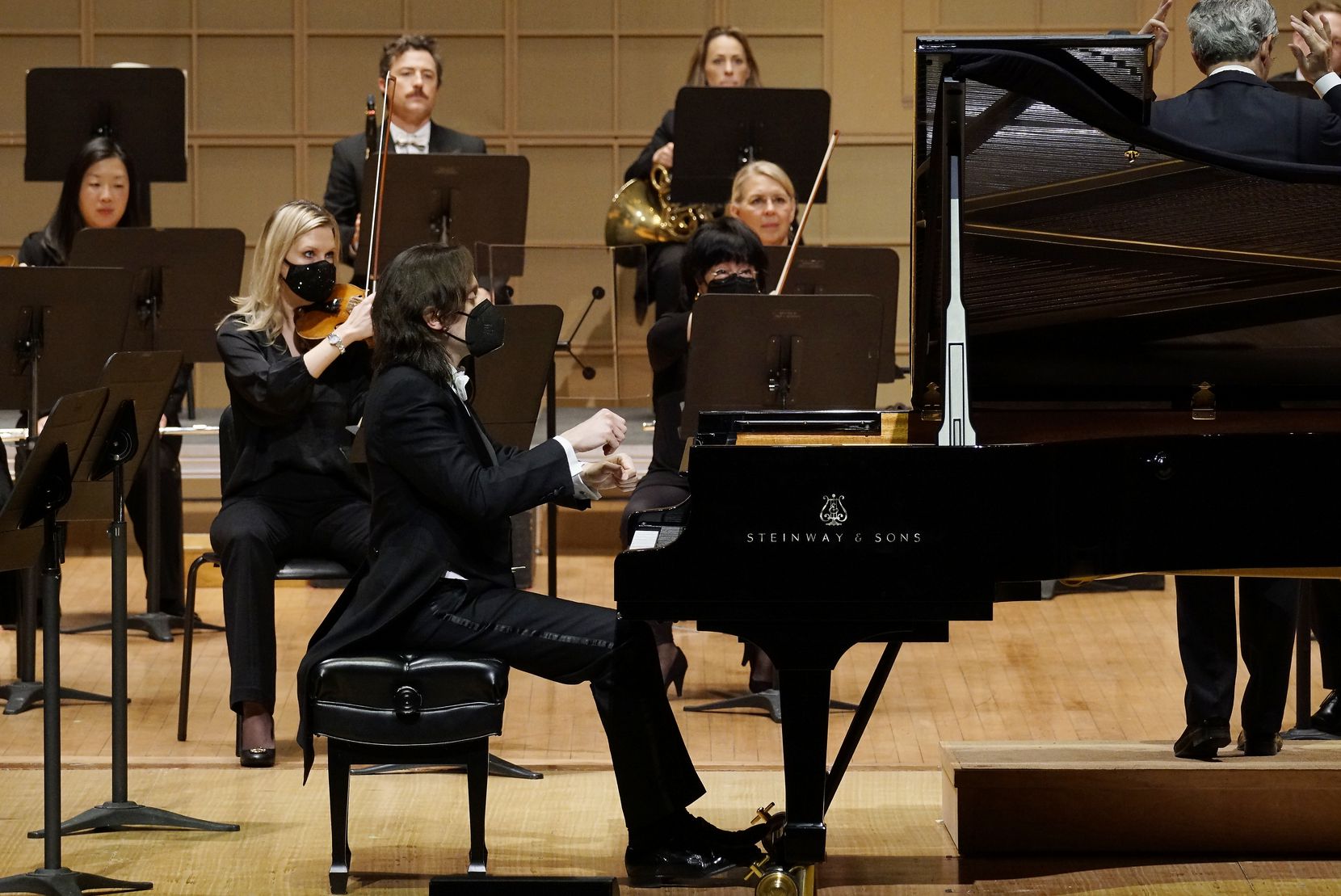Dallas Morning News: Dallas Symphony energize frothy French fare (Review)

In the first of four programs over five weeks, Fabio Luisi conducts the Dallas Symphony Orchestra at the Meyerson Symphony Center on Thursday night.
It takes a while for a new music director to set a stamp on an orchestra. That’s been especially true this time for the Dallas Symphony Orchestra, between a twoseason wait for Fabio Luisi fully to take over and the turmoil created by the coronavirus epidemic.
With Luisi contracted to be fully in place for the 2020/21 season, DSO management was determined to present a full schedule of concerts. But given health concerns, programs have been limited to works that can be played by chamberorchestra ensembles of musicians widely spaced on the Meyerson Symphony Center stage. Audiences have been even more drastically reduced, although highquality video recordings are available on the DSO website.
Unable to work with the entire orchestra at once, Luisi so far has been able to exert only piecemeal impact.
But Thursday night’s concert was the first of four DSO programs Luisi will conduct over five weeks. And, start to finish, it certainly evinced a distinctive stamp. This was all the more remarkable in two mid 19thcentury French pieces often left to exert their charms without a lot of interpretive intervention.
Born only three years apart in the 1830s, Camille SaintSaëns and Georges Bizet were both child prodigies. Bizet was a mere 17 when he composed his Symphony in C major. Sadly, he died at age 36, after what he considered the failure of his opera Carmen — which, of course, went on to become one of the most popular operas in the repertory.
SaintSaëns was 33, and already famous as a pianist, organist and composer, when he penned his Second Piano Concerto, in G minor. He went on to a long life and prolific output as a composer, dying in 1921.
Both pieces fit into a venerable French tradition of “lite” music — decorative fare to induce smiles and banish frowns. But Luisi and, in the concerto, Italian pianist Alessandro Taverna supplied boldly contoured and finely detailed performances. In both pieces, fortissimos were reserved for truly dramatic effects; at least as impressive were the delicate pianissimos.

The Saint-Saëns opens with grand, almost portentous, flourishes, but then relaxes into pleasant, moderately paced tunefulness. Each of the two following movements gets faster: a cheeky, dancing scherzo; a razzledazzle finale. Taverna and Luisi supplied many a suave taper, many a subtle hesitation before a pivotal chord.
It was more of the same in the Bizet. The three quick movements were rhythmically spirited — the finale quite an aerobic spray of sonic confetti. The (relatively) slow movement was sprung with balletic grace. Trumpets were a bit loud in some firstmovement balances, but principal oboist Erin Hannigan strung out long and elegantly tapered lines with apparently limitless breath.
In both pieces, leading without a baton, Luisi didn’t so much beat time — except when strictly necessary — as mold and direct the music with real sophistication. I look forward to those next three programs.
Scott Cantrell
-
Recent News
- Video: Britten Piano Concerto – Dallas Symphony Orchestra (YouTube) 26 January, 2024
- Video: San Carlo, magia sinfonica (RAI TGR Campania) 1 January, 2024
- Review: Il rigore e la passione di Dego e Taverna (Il portale del violino) 18 December, 2023
- Review: Taverna, Ceretta e ORT (DeArtes) 11 December, 2023
- Review: Diego Ceretta con Alessandro Taverna e l’Orchestra della Toscana (Operaclick) 5 December, 2023
- Review: Angius, Taverna e l’OPV omaggiano Malipiero (Il Giornale della Musica) 24 November, 2023
- Review: Yutaka Sado and the DSO brilliantly deliver a fresh program (Dallas Morning) 18 November, 2023
- Review: Il Verdi di Trieste infiamma il pubblico (Musica) 11 October, 2023
- Review: Trieste, Teatro Verdi: Sesto concerto della stagione sinfonica (Operaclick) 9 October, 2023
- Interview: A Portogruaro la musica è multiverso (Il Giornale della Musica) 21 August, 2023
- Review: Colori Russi (L’Ape Musicale) 28 July, 2023
- Review: Torre del Lago, Concerto diretto da Gianandrea Noseda con Alessandro Taverna (OperaClick) 24 July, 2023
Latest tweets
Recent News
- Video: Britten Piano Concerto – Dallas Symphony Orchestra (YouTube)
- Video: San Carlo, magia sinfonica (RAI TGR Campania)
- Review: Il rigore e la passione di Dego e Taverna (Il portale del violino)
- Review: Taverna, Ceretta e ORT (DeArtes)
- Review: Diego Ceretta con Alessandro Taverna e l’Orchestra della Toscana (Operaclick)
